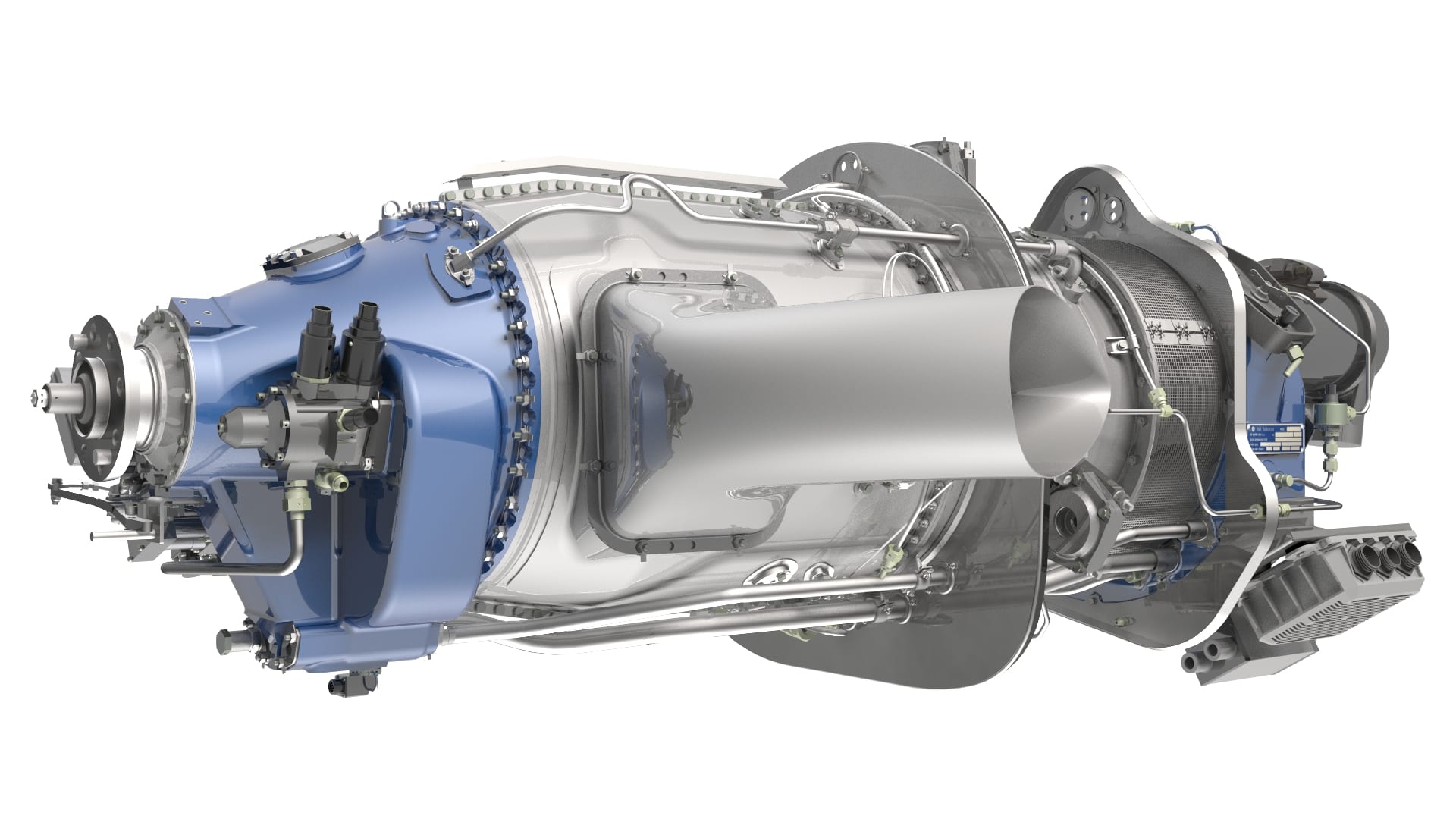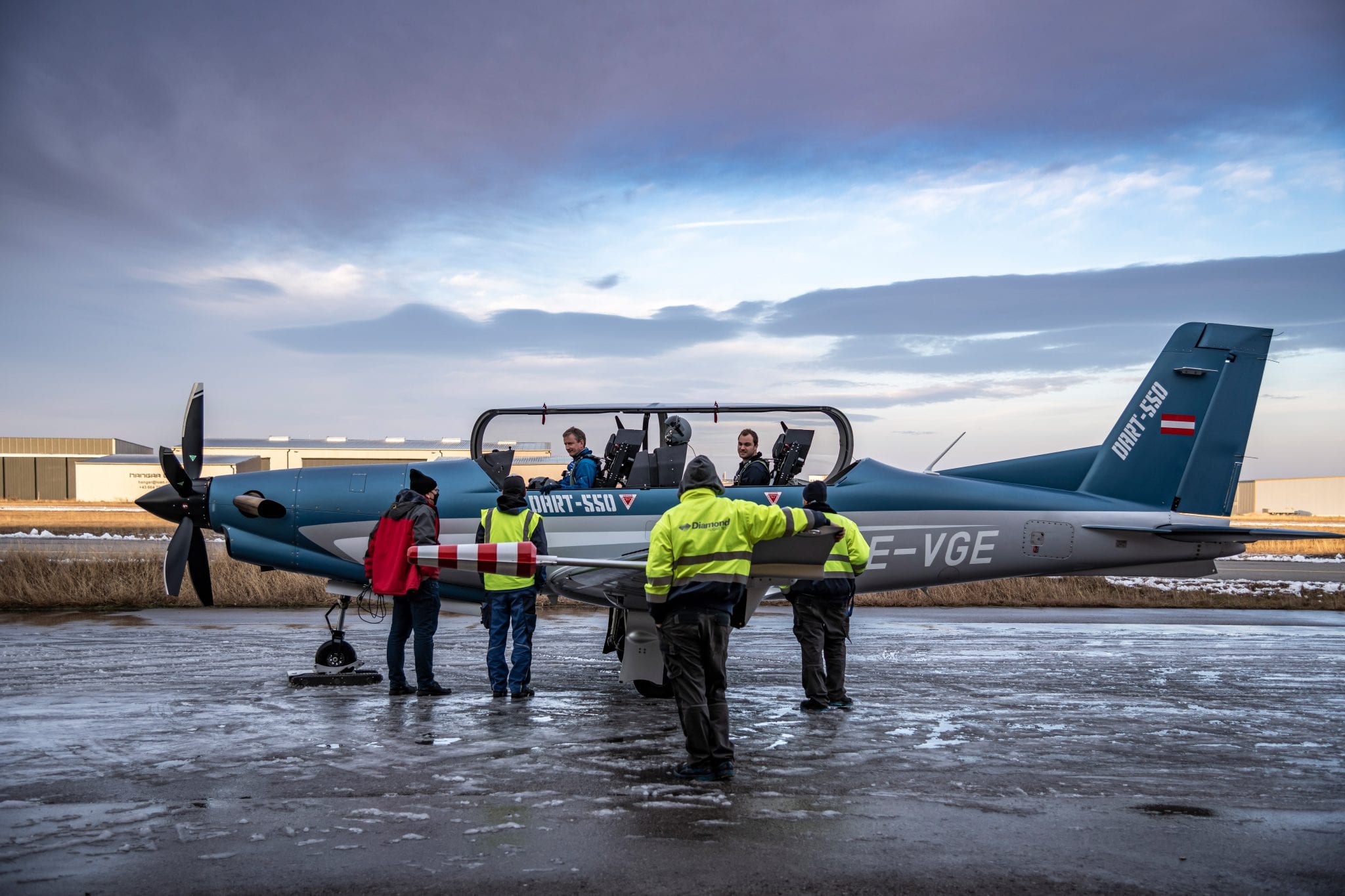Upside Down You’re Turnin’ Me: The Diamond DART-550 Takes its First H75-A Powered Flight
December 15, 2020 | by Yari Bovalino
Aerobatic flight is almost certainly one of the most breathtaking spectacles in aviation. Behind the prowess of the pilot, behind the maneuverability of the aircraft lies the power that makes it all possible: The aircraft engine.
Earlier this month, the Diamond DART-550 took its first flight with the new fully aerobatic GE Aviation H75-A engine at Wiener Neustadt East Airport (LOAN) in Austria. The flight lays the foundation for the GE H75-A to undergo flight and aerobatic tests on board the brand-new DART-550. The aircraft has been flying with the modified standard H75 engine.
“Today’s market demands greater operational efficiency, lower fuel consumption and emissions, and in particular a new generation of aerobatic aircraft, with weight optimized by cutting-edge materials and high-performance onboard electronics," said Michal Ptacnik, PhD. Senior Director, Business Development and Sales, GE Aviation Czech.
The new aerobatic GE H75-A engine was developed to meet these new performance demands. And for the first time, the H75-A turboprop engine in this power class makes made debut with an electronic engine and propeller control unit that allows pilots to perform training flying a single lever aircraft, replicating a jet-piloting experience.
“This allows pilots to focus more on what’s happening outside the cockpit versus on what’s happening inside: this does not only increase the flight safety but even make the flight experience more enjoyable,” Ptacnik says.
The H Series engines are by nature highly efficient and created to withstand the most drastic and challenging natural flight conditions, which is why the aerobatic version has been enhanced. Not only with integrated propeller and engine control, but also a readjustment of the fluid dynamics to allow in-flight maneuvers that defy the laws of gravity: situations where even upside down, swooping or flying sideways, the oil or fuel systems in the engine must continue to operate as if they were in a normal position.
“I’ve experienced flight testing with both the standard H75 engine and during the recent maiden flight with the new aerobatic version: despite the harsh weather conditions and the very first time in-flight, the H75-A engine behave as expected and without any stress at all… this is very important since our goal is right to expand the aerobatic performance of DART-550” said Diamond Chief Test Pilot, Sören Pedersen.
Free-fall. Negative gravity. Stall turns. All maneuvers and situations that must be considered when developing an aerobatic engine.
Jan Nedvidek, Senior Program Manager at GE Aviation Turboprop, notes the team redesigned the oil system while at the same time developed structural components and controls to ensure optimal engine support, even in situations with negative gravity acceleration.
"In all these maneuvers where the aircraft simulates free fall in the air or faces conflicting physical forces, as in vertical flight, these are situations where a traditional oil system struggles to pump to lubricate engine components,” he said.
The next goal will be to push further the limits of what is possible during the aerobatic tests that will lead to EASA and FAA certification of the engine in the near future. Meanwhile, it will be stunning to watch the intrepid pilots who will test the H75-A on board the new DART-550 perform spins, breathtaking maneuvers and staying upside down in the air for up to 60 seconds.
“The ultimate flight testing will continue through 2021 using the real aircraft in the air,” Nedvidek said.
Earlier this month, the Diamond DART-550 took its first flight with the new fully aerobatic GE Aviation H75-A engine at Wiener Neustadt East Airport (LOAN) in Austria. The flight lays the foundation for the GE H75-A to undergo flight and aerobatic tests on board the brand-new DART-550. The aircraft has been flying with the modified standard H75 engine.
“Today’s market demands greater operational efficiency, lower fuel consumption and emissions, and in particular a new generation of aerobatic aircraft, with weight optimized by cutting-edge materials and high-performance onboard electronics," said Michal Ptacnik, PhD. Senior Director, Business Development and Sales, GE Aviation Czech.
 The H75-A engine, complete with electronic engine and propeller controls, is the new aerobatic version of the H-Series turboprop.
The H75-A engine, complete with electronic engine and propeller controls, is the new aerobatic version of the H-Series turboprop.
The new aerobatic GE H75-A engine was developed to meet these new performance demands. And for the first time, the H75-A turboprop engine in this power class makes made debut with an electronic engine and propeller control unit that allows pilots to perform training flying a single lever aircraft, replicating a jet-piloting experience.
“This allows pilots to focus more on what’s happening outside the cockpit versus on what’s happening inside: this does not only increase the flight safety but even make the flight experience more enjoyable,” Ptacnik says.
The H Series engines are by nature highly efficient and created to withstand the most drastic and challenging natural flight conditions, which is why the aerobatic version has been enhanced. Not only with integrated propeller and engine control, but also a readjustment of the fluid dynamics to allow in-flight maneuvers that defy the laws of gravity: situations where even upside down, swooping or flying sideways, the oil or fuel systems in the engine must continue to operate as if they were in a normal position.
 Diamond Chief Test Pilot, Sören Pedersen, front, shortly after landing.
Diamond Chief Test Pilot, Sören Pedersen, front, shortly after landing.
“I’ve experienced flight testing with both the standard H75 engine and during the recent maiden flight with the new aerobatic version: despite the harsh weather conditions and the very first time in-flight, the H75-A engine behave as expected and without any stress at all… this is very important since our goal is right to expand the aerobatic performance of DART-550” said Diamond Chief Test Pilot, Sören Pedersen.
Free-fall. Negative gravity. Stall turns. All maneuvers and situations that must be considered when developing an aerobatic engine.
Jan Nedvidek, Senior Program Manager at GE Aviation Turboprop, notes the team redesigned the oil system while at the same time developed structural components and controls to ensure optimal engine support, even in situations with negative gravity acceleration.
"In all these maneuvers where the aircraft simulates free fall in the air or faces conflicting physical forces, as in vertical flight, these are situations where a traditional oil system struggles to pump to lubricate engine components,” he said.
The next goal will be to push further the limits of what is possible during the aerobatic tests that will lead to EASA and FAA certification of the engine in the near future. Meanwhile, it will be stunning to watch the intrepid pilots who will test the H75-A on board the new DART-550 perform spins, breathtaking maneuvers and staying upside down in the air for up to 60 seconds.
“The ultimate flight testing will continue through 2021 using the real aircraft in the air,” Nedvidek said.
 The DART-550 powered with H75-A engine taking off at Wien Neustadt Eastern Airport.
The DART-550 powered with H75-A engine taking off at Wien Neustadt Eastern Airport.
